Keeping dogs and children safe and happy together
The bond between your child and dog can bring fun and happiness to family life. We do not expect our dog to bite but any dog can bite if they feel that they have no other option.
In 2022, 1,700 children were admitted to hospital after being bitten by a dog – but such incidents are preventable with close supervision of children and a good understanding of dog body language.
We have put together this page to help highlight how to prevent dog bite incidents on children. We have included two fact sheets that were put together by the Child Accident Prevention Trust, DEFRA, Dogs Trust and RSPCA, as well as the "Dog Safety Code" published by the Canine and Feline Sector Group (CFSG) and our own dog body language graphics.
This "Safety around dogs" fact sheet will help you to keep your child safe and your dog happy:
.jpg)
Do you have a little one on the way? If you have a baby joining your household, then now is the time to start preparing your dog.
This "Your dog and your new baby" fact sheet will help you to prepare your dog for your new arrival:
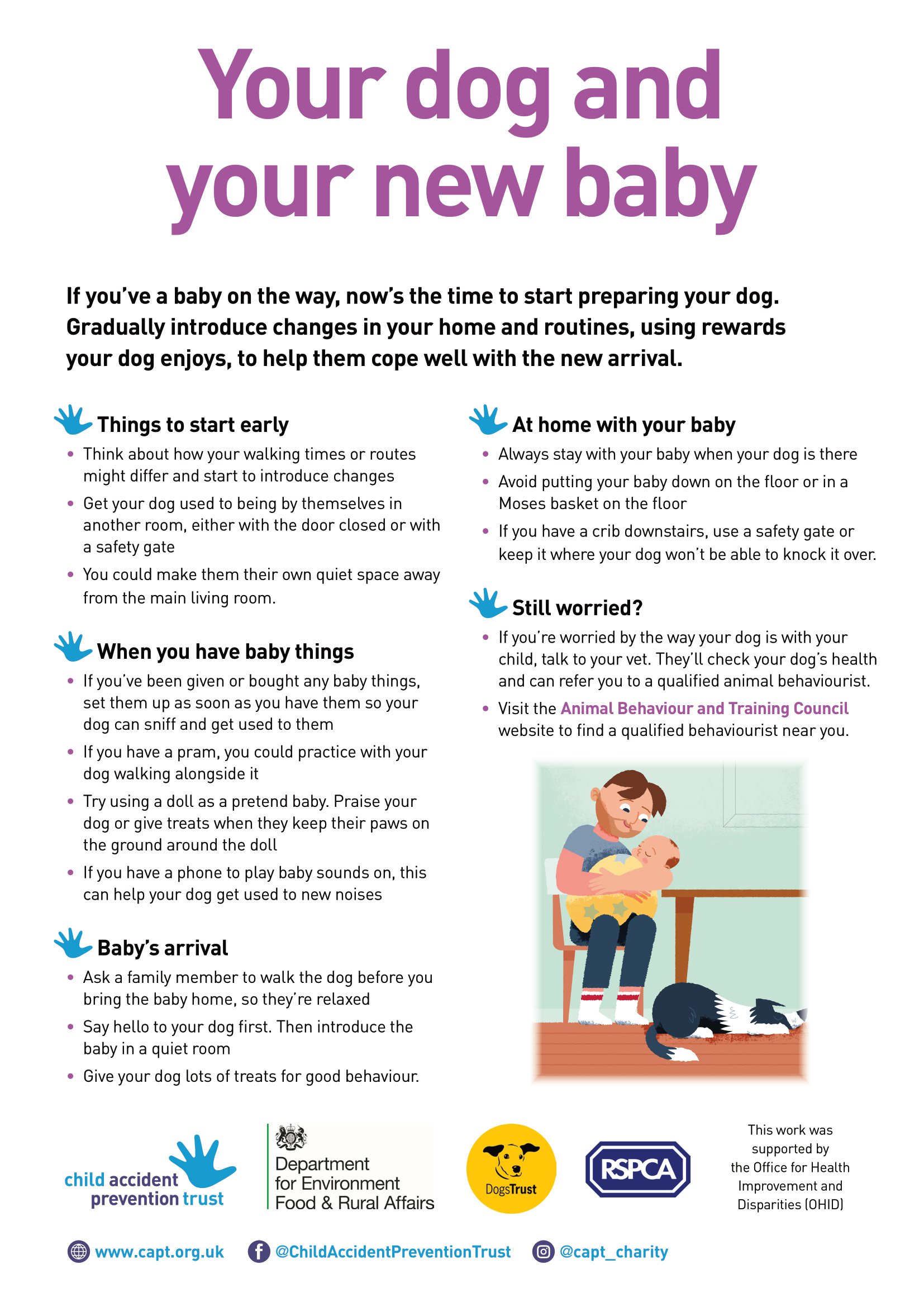
The "Dog Safety Code" helps to encourage everyone to be alert, aware and, most importantly, safe around dogs:
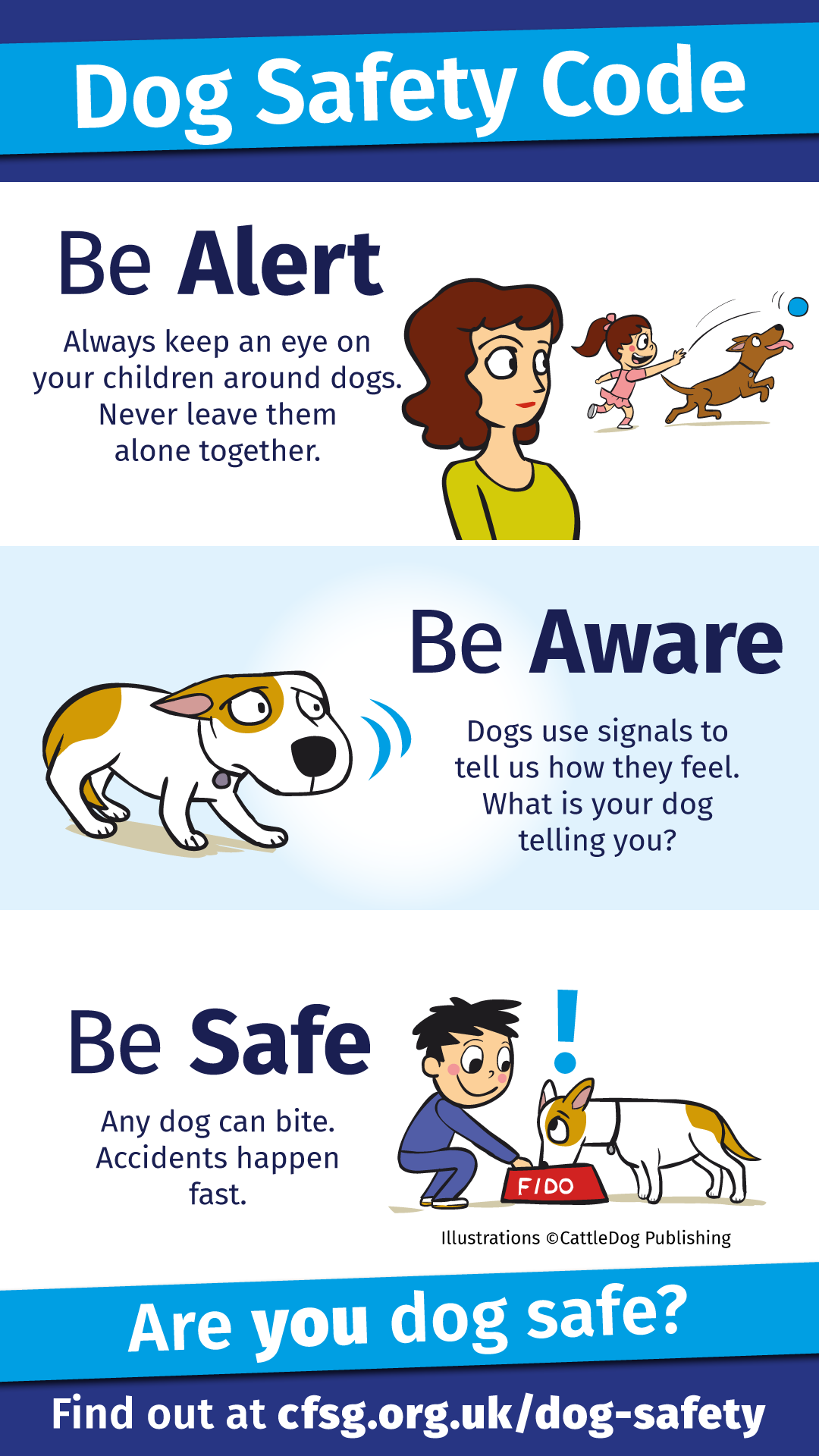
CFSG also offer the following Practical Tips For Child Safety Around Dogs:
It is important that families are equipped with the knowledge and skills they need to enjoy spending time with dogs safely. Close supervision of children and dogs is key.
Be Alert:
-
Close supervision is the most important thing to keep children safe.
- Watch, listen and remain close when your child and dog are together. Never leave them alone together.
- If either your dog or child seems unhappy, positively and calmly separate them. You can throw your dog a treat or toy, or lead your child away.
Be Aware:
-
Understand your dog’s body language so you can spot signs they feel uncomfortable or stressed.
- When you know you’ll be distracted during busier times, use safety gates to keep children and dogs separate or, take your child or dog with you.
Be Safe:
Trigger times – teach your child to leave your dog alone when they are:
- Sleeping – no-one likes to be woken up suddenly.
- Eating or having a treat – they might think you’re going to take their food.
- Have a toy or something else they really like – they might not want to share.
The following graphics and explanations will help you to understand if your dog is happy, worried or angry and if they want to interact with your child.
A Happy, Relaxed, Playful dog:
- May be sitting with relaxed body posture, a smooth coat, no signs of hackles (raised hair), an open, relaxed mouth, relaxed ears in a neutral position, a relaxed or wagging tail and soft, normal-shaped eyes.
- May be inviting play with a bow while their bottom is raised in the air, with high, excited, wagging tail and hips, ears in a neutral position and barking excitedly, which often sounds like a high-pitched yip.
- May be standing with relaxed body posture, their weight evenly distributed across all four paws, a smooth coat with no signs of hackles, a wagging tail, an interested, alert, relaxed face and open mouth.
This happy dog graphic shows some of the signals that a happy, relaxed, playful dog may display when they are telling you that they are comfortable and happy to interact:
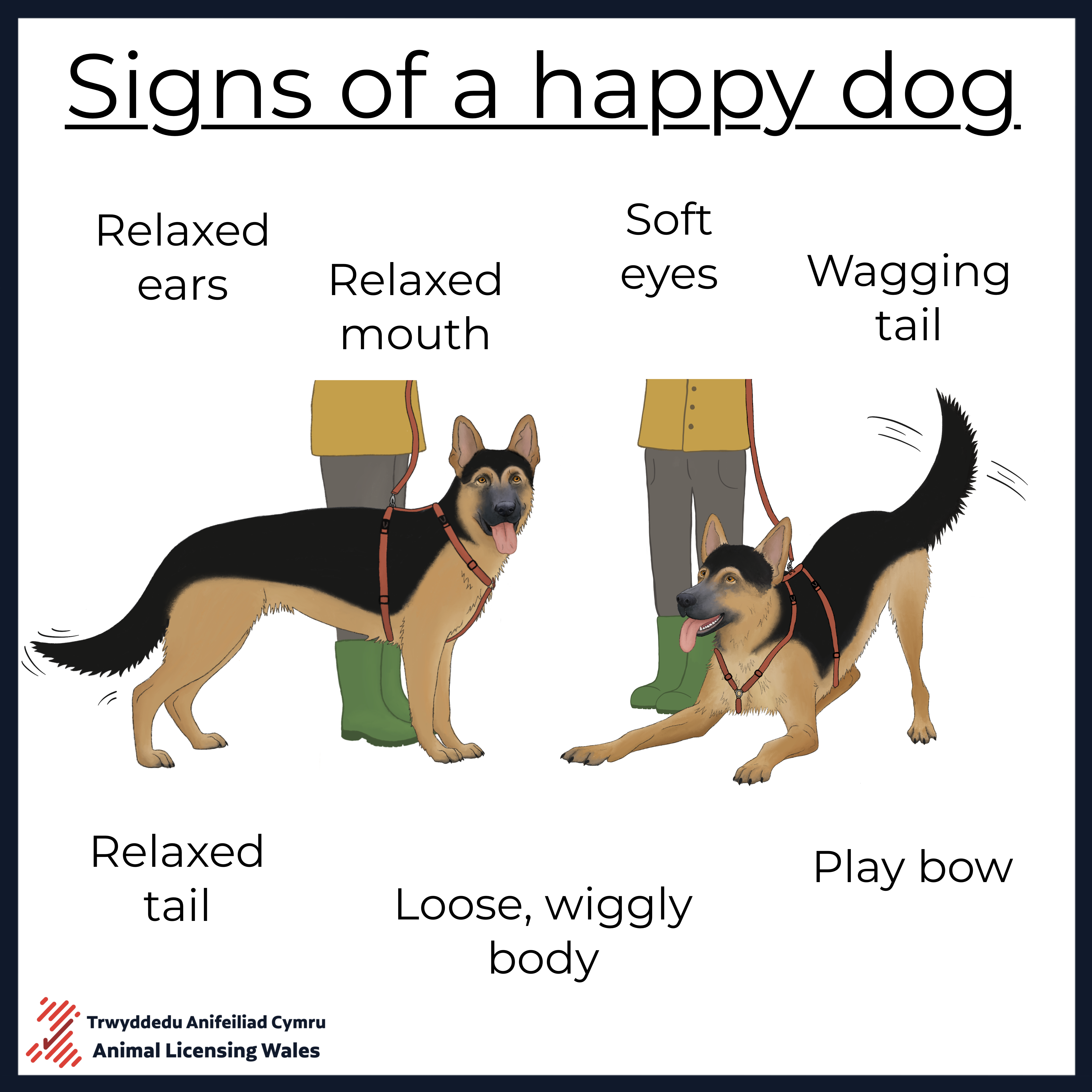
Remember: accidents can happen and even if your dog is happy and wants to interact with your child, it is important to always actively supervise their interactions and follow the Dog Safety Code.
A Fearful, Worried, Nervous dog:
- May be standing with stiff, rigid body movement, low body posture and head position, their tail tucked underneath them, ears pinned back and yawning.
- May be lying down while avoiding eye contact, showing lots of the whites of their eyes ("whale eye") or turning their head away from you, licking their lips and with their ears pinned back.
- May be sitting with their head lowered, ears back, tail tucked, avoiding eye contact, yawning or raising a front paw.
This fearful dog graphic shows some of the signals that a worried, nervous, fearful dog may display when they are telling you that they are uncomfortable and do not want you to interact:
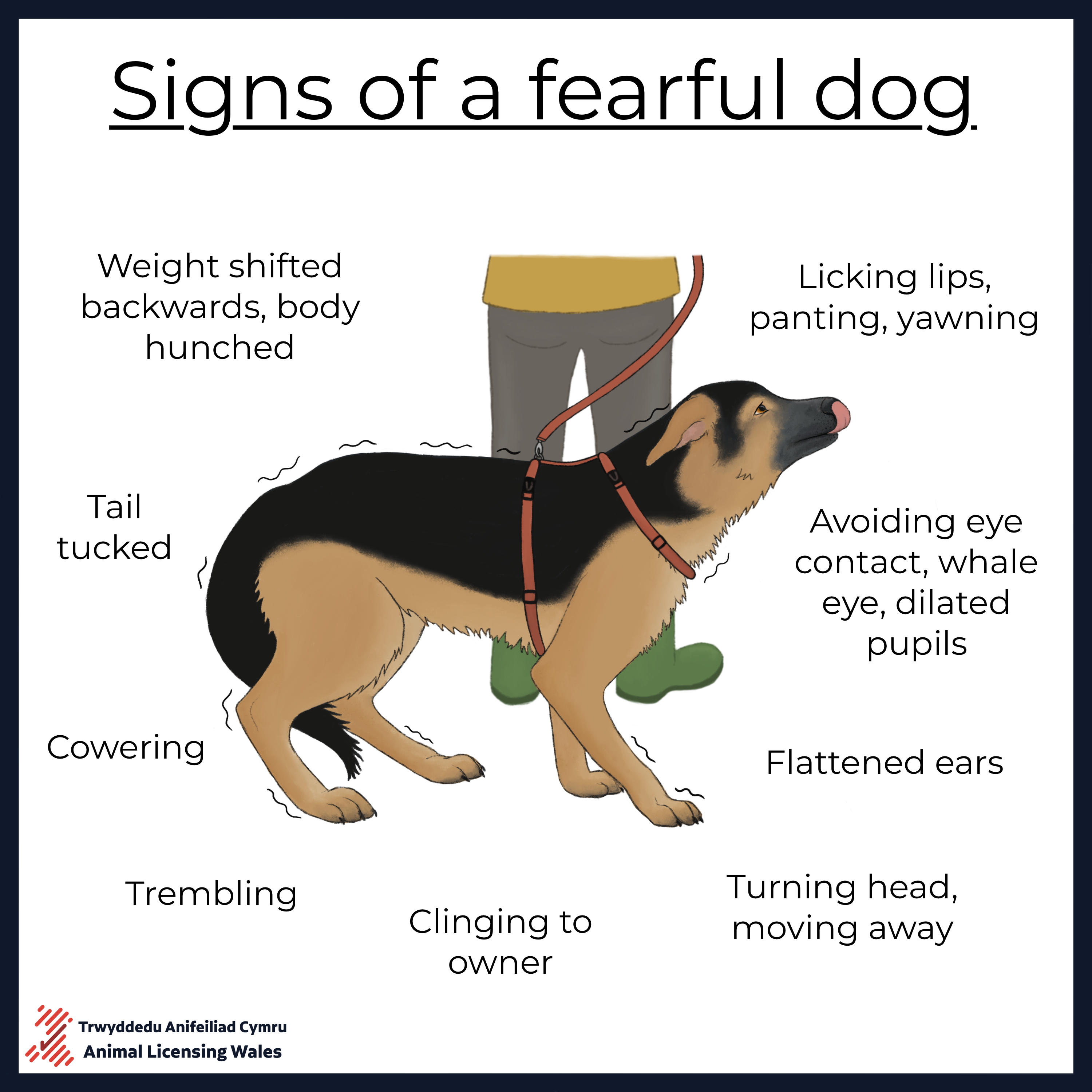
These fearful, nervous, worried dogs are telling you that they are uncomfortable and do not want you or your child to go near them. It is important that you do not let your child interact with these dogs.
An Angry, Unhappy, Aggressive dog:
- May be standing with stiff, rigid body posture, their weight shifted forward, ears tense and upright, tension through their face, hair raised, eyes staring at you with enlarged dark pupils, a wrinkled nose and a stiff, upright, rigid tail.
- May be lying down, cowering, with ears flat to their head and tail down between their legs.
- May be standing with a low body and weight shifted backwards, head tilted upwards, ears pinned backwards, mouth tight and tense, lips drawn back with teeth exposed, while snarling and staring at you.
This aggressive dog graphic shows some of the signals that an angry, unhappy, aggressive dog may display when they are telling you that they are uncomfortable and they do not want to interact:
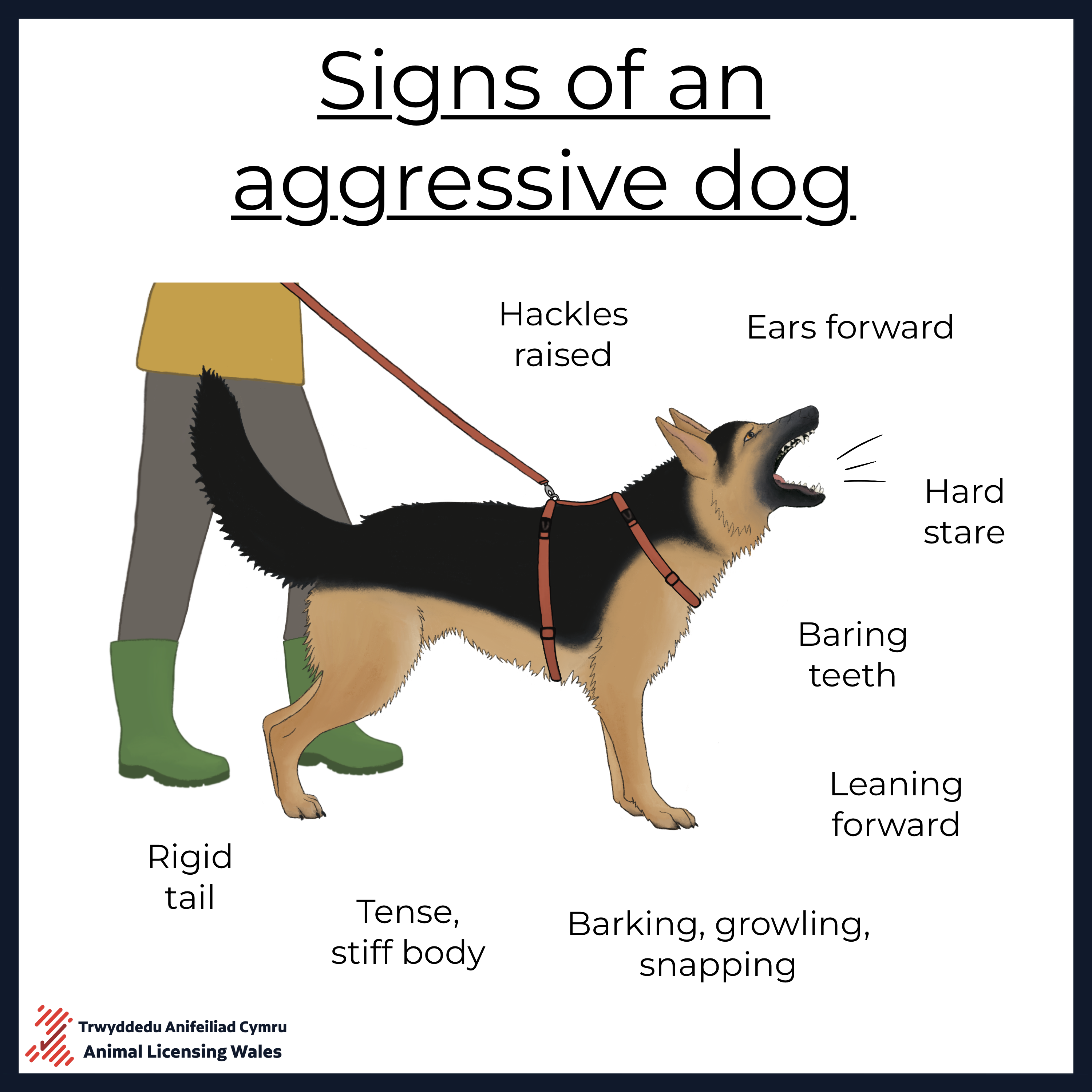
These angry, aggressive dogs are telling you they are unhappy and want you to stay away or go away. It is important that you do not allow your child to interact with these dogs and you immediately remove them from each other's space.
Previous articleNext article